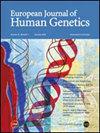超越基因组学:使用来自干血斑点的RNA-seq来解锁剪接变异在诊断环境中的临床相关性。
IF 3.7
2区 生物学
Q2 BIOCHEMISTRY & MOLECULAR BIOLOGY
引用次数: 0
摘要
我们的目的是评估我们实验室报告的剪接变异的影响,以深入了解其临床相关性。考虑到基因在血液中的表达,我们选择了连续108个个体进行rna测序(RNA-seq),其中报道了113个剪接变异体。制定了一项方案,使用提供给DNA分析的相同样本(干血斑,DBS)进行RNA提取和测序,包括文库制备和生物信息学管道分析。使用IGV检查感兴趣基因的剪接,至少有三个未受影响的个体作为对照。从113个变异中,我们确认64个变异(57%)存在异常剪接。在15个变异(13%)中,我们没有观察到剪接改变。在剩余的34个变异中,由于样本质量不足(21%)或reads数低(9%),无法确定剪接效果。最常见的导致异常剪接的事件是外显子跳变,在31个变异中发现(48%)。其他事件包括隐秘的供体/受体位点使用(n = 25;39%),内含子保留(n = 4;6%)和其他复杂事件(n = 4;6%)。在三名患者中,病理降低的酶活性(使用相同的DBS测量)作为由HEXA, GAA和GLA变异引起的异常剪接的额外确认。我们使用提供给基因组测试的相同样本实施了RNA-seq管道。这种多组学方法在我们的常规诊断过程中得以实施,阐明了大多数分析变异的临床相关性,并提供了更全面的基因检测。本文章由计算机程序翻译,如有差异,请以英文原文为准。

Beyond genomics: using RNA-seq from dried blood spots to unlock the clinical relevance of splicing variation in a diagnostic setting
We aimed to assess the impact of splicing variants reported in our laboratory to gain insight into their clinical relevance. A total of 108 consecutive individuals, for whom 113 splicing variants had been reported, were selected for RNA-sequencing (RNA-seq), considering the gene expression in blood. A protocol was developed to perform RNA extraction and sequencing using the same sample (dried blood spots, DBS) provided for the DNA analysis, including library preparation and bioinformatic pipeline analysis. Splicing in genes of interest was inspected using IGV, with at least three unaffected individuals as controls. From the 113 variants, we confirmed an abnormal splicing in 64 variants (57%). In 15 variants (13%), we did not observe a splicing alteration. In the remaining 34 variants, no decision could be made on the splicing effect due to insufficient sample quality (21%) or a low number of reads (9%). The most common event leading to aberrant splicing was exon skipping, identified in 31 variants (48%). Other events included cryptic donor/acceptor site usage (n = 25; 39%), intron retention (n = 4; 6%), and other complex events (n = 4; 6%). In three patients, pathologically reduced enzymatic activity (measured using the same DBS) served as additional confirmation of the abnormal splicing caused by variants in HEXA, GAA, and GLA. We implemented an RNA-seq pipeline using the same sample provided for genomic testing. This multiomic approach, as implemented in our routine diagnostic processes, clarifies the clinical relevance of most of the analyzed variants and delivers more comprehensive genetic testing.
求助全文
通过发布文献求助,成功后即可免费获取论文全文。
去求助
来源期刊

European Journal of Human Genetics
生物-生化与分子生物学
CiteScore
9.90
自引率
5.80%
发文量
216
审稿时长
2 months
期刊介绍:
The European Journal of Human Genetics is the official journal of the European Society of Human Genetics, publishing high-quality, original research papers, short reports and reviews in the rapidly expanding field of human genetics and genomics. It covers molecular, clinical and cytogenetics, interfacing between advanced biomedical research and the clinician, and bridging the great diversity of facilities, resources and viewpoints in the genetics community.
Key areas include:
-Monogenic and multifactorial disorders
-Development and malformation
-Hereditary cancer
-Medical Genomics
-Gene mapping and functional studies
-Genotype-phenotype correlations
-Genetic variation and genome diversity
-Statistical and computational genetics
-Bioinformatics
-Advances in diagnostics
-Therapy and prevention
-Animal models
-Genetic services
-Community genetics
 求助内容:
求助内容: 应助结果提醒方式:
应助结果提醒方式:


